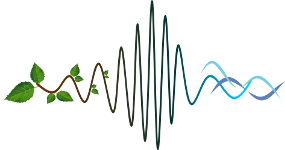Passive acoustic monitoring is a promising method to better understand ecological processes. So far this method has only rarely been applied to freshwater environments and soundscape ecology has mainly investigated terrestrial and marine environments. Thanks to the development of powerful acoustic tools for signal analysis and recording, it is now becoming easier to investigate underwater acoustic productions. Micronecta scholtzi is a water boatman of the Hemiptera order which is the loudest animal known on earth scaled to its size. To better estimate the importance of M. scholtzi in the underwater biophony of Mediterranean ponds, we carried out a long term acoustic monitoring of this species in the field and attempted to characterise factors that might influence its sound production. We recorded the soundscape of three Mediterranean ponds in France from June to July with underwater automatic acoustic sensors. The acoustic activity of M. scholtzi was estimated as the ratio of amplitudes between 7 and 12 kHz to amplitudes between 7 and 22 kHz. These frequency bands were chosen respectively as the band occupied by M. scholtzi and the remaining frequencies that are rarely occupied by other organisms in the acoustic community such as frogs or other insects. We showed that the acoustic activity of M. scholtzi had a clear 24 hour period. The acoustic activity remained stable over the duration of the monitoring in two of the ponds. In the third pond, the acoustic activity showed a different seasonal trend with periodicity breaks. Investigating the cause of these periodicity breaks, we found that the anthrophony of the pond was particularly important due to the occurrence of an artificial waterfall. We therefore assume that the variations in M. scholtzi stridulation observed were due to anthropogenic noise perturbation but additional field observations and laboratory experiments are needed to support this hypothesis.
|
|
|
|
Wednesday
18
Applications IV
› 11:45 - 12:00 (15min) › Grande Galerie Evolution Conference Hall
Monitoring the acoustic activity of an aquatic insect (Micronecta scholtzi) in Mediterranean ponds.
1 : Institut de Systématique, Evolution, Biodiversité
(ISYEB)
-
Website
Muséum National d'Histoire Naturelle (MNHN), CNRS : UMR7205, Université Pierre et Marie Curie [UPMC] - Paris VI, École Pratique des Hautes Études [EPHE], Université Pierre et Marie Curie (UPMC) - Paris VI
45 rue Buffon, 75005 Paris -
France
2 : Centre de Neurosciences Paris-Sud
(CNPS)
-
Website
* : Corresponding author
Université Paris XI - Paris Sud, CNRS : UMR8195
Bâtiment 446 91405 ORSAY Cedex -
France
|
| Online user: 1 | RSS Feed |

|

 PDF version
PDF version